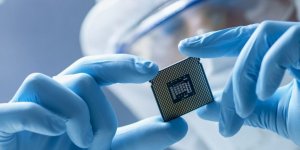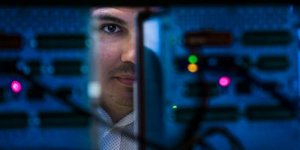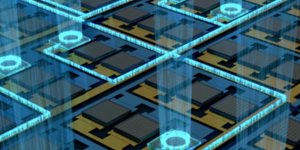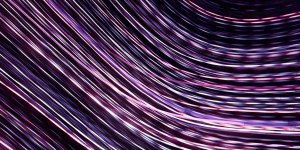Technology

The flammability of pine needles, a major fire hazard in the coniferous forests, makes them an abundant source of renewable energy, say researchers. »

Researchers have made a groundbreaking discovery in battery technology, finding a way to create an efficient battery using zinc, a readily available and inexpensive metal, instead of the rare metals typically used in lithium batteries. »

Bird with uncanny ability to hold water while it flies could inspire the next generation of absorbent materials. »

Understanding how this mechanism works could lead to quantum devices that do not need cooling to operate. »

Research aims to help semiconductor industry make computing less of an energy hog. »

Researchers at the U.S. Department of Agriculture's (USDA) Agricultural Research Service (ARS) bred four cotton lines that can be used to make self-extinguishing textiles when exposed to fire and will reduce the need for flame-retardant chemicals to be embedded in consumer products. »

Scientists have measured the highest toughness ever recorded, of any material, while investigating a metallic alloy made of chromium, cobalt and nickel, or CrCoNi. »

Although blockchain is best known for securing digital currency payments, researchers at the Department of Energy’s Oak Ridge National Laboratory are using it to track a different kind of exchange: It’s the first time blockchain has ever been used to validate communication among devices on the electric grid. »

New device speeds up, simplifies image processing for autonomous vehicles and other applications. »

Researchers have designed smart, colour-controllable white light devices from quantum dots which are more efficient and have better colour saturation than standard LEDs, and can dynamically reproduce daylight conditions in a single light. »

Engineers fabricate 30-year perovskite solar cell. »

3D microscope can see inside living tissue in real-time. »

Researchers have developed a method to stabilise a promising material known as perovskite for cheap solar cells, without compromising its near-perfect performance. »

New neural nano-optics technology can be produced on the scale of a microchip. »

High-resolution camera can see around corners and through scattering media. »

Proof-of-concept study shows capacity to identify proteins with single-amino acid resolution. »

Compact technology could make mass fever detection faster and cheaper. »

Sensor can detect the presence of an element called terbium. »

Floats capture thousands of ocean profiles every year. »

LEDs currently on the market emit a lot of blue light. »

Deep vein thrombosis is the formation of blood clots in deep veins. »

Researchers have developed a simple lab-based technique that allows them to (...) »

Graphene can be used for ultra-high density hard disk drives (HDD), with up to (...) »

Researchers develop signals that could bring color vision and improved clarity for the blind. »

An international team of researchers managed to increase the capacity and extend the service life of lithium-ion batteries by using a new nanomaterial. »

Researchers have found a way to protect highly fragile quantum systems from noise, which could aid in the design and development of new quantum devices, such as ultra-powerful quantum computers. »

The quantum sensing abilities of nanodiamonds can be used to improve the sensitivity of paper-based diagnostic tests (...) »

Scientists have used gene therapy to regenerate damaged nerve fibres in the eye, in a discovery that could aid the development of new treatments for glaucoma. »

Dopamine detector can help in early diagnosis of Parkinson's, Alzheimer's and schizophrenia. »

Unusual nanoparticles could benefit the quest to build a quantum computer. »

Researchers from the Universities of Granada and Cádiz have conducted a study to validate a new methodology that uses mobile phone signals (or those of other smart devices) in urban areas to track and analyse behavior in terms of inhabitants’ movement around the city. »

World population growth and lifestyle are the main causes of the increase in the volume of wastewater. As a result of the treatment of these waters, millions of tons of sewage sludge are generated, filling landfills and generating pollution, unpleasant odours, and public health risks. »

An international group of scientists, including from the University of Cambridge, have developed a graphene composite that can ‘eat’ common atmospheric pollutants, and could be used as a coating on pavements or buildings. »

Researchers have created better biosensor technology using a newly developed instrument that may lead to safe stem cell therapies for treating Alzheimer's and Parkinson's diseases and other neurological disorders. »

With a brief glance, facial recognition software can categorize gender with remarkable accuracy. But if that face belongs to a transgender person, such systems get it wrong more than one third of the time, according to new CU Boulder research. »